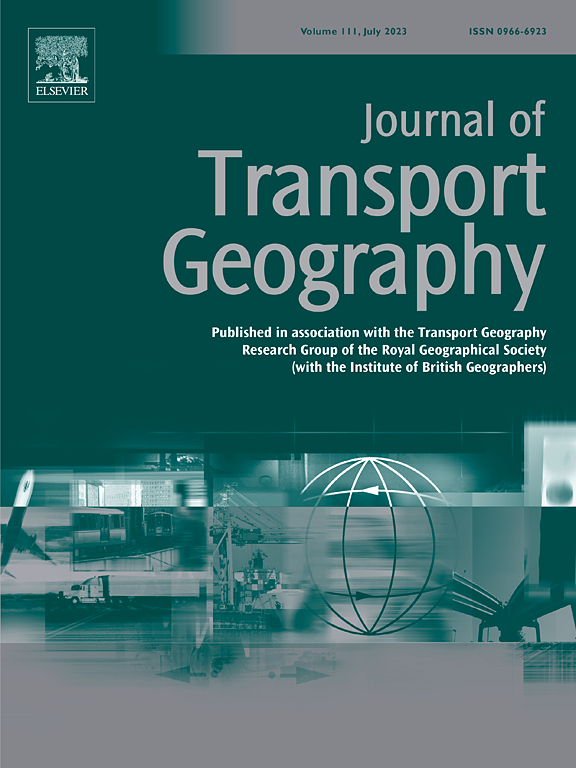利用旅行活动对重型卡车二氧化碳排放量进行建模和空间分析
IF 6.3
2区 工程技术
Q1 ECONOMICS
引用次数: 0
摘要
重型卡车(HDTs)是货运行业的重要组成部分,但因其大量的二氧化碳排放而受到批评。本研究以中国重要的货运枢纽城市西安为研究对象,探讨影响高速公路二氧化碳排放的因素。本研究的一个独特之处在于使用潜在狄利克雷分配(LDA)模型,利用从大量GPS数据中提取的HDTs的旅行活动来评估不同旅行活动对二氧化碳排放的潜在影响。随后,使用随机森林模型(RF)和GeoShapley解释器来检验旅行活动、道路密度、土地利用和货运枢纽可达性对二氧化碳排放的主要和空间影响。结果表明,西安市高户型居民存在15种不同的出行活动,其中8种活动对CO2排放有明显影响。GeoShapley值表明,在不同变量对二氧化碳排放的影响程度上观察到相当大的变化。高速公路和主干道密度对CO2排放的影响最大,各类出行活动对CO2排放的影响也显著,且不同出行活动对CO2排放的影响存在一定程度的差异。各变量对CO2排放的影响存在明显的空间异质性,较大的正GeoShapley值倾向于集中在西安市三环和高速公路附近。这些发现揭示了影响高密度森林二氧化碳排放的各种因素之间复杂的相互作用,为从空间角度制定环境可持续的高密度森林管理政策提供了有价值的见解。本文章由计算机程序翻译,如有差异,请以英文原文为准。
Modeling and spatial analysis of heavy-duty truck CO2 using travel activities
Heavy-duty trucks (HDTs) are vital components of the freight industry yet have faced criticism for their substantial CO2 emissions. This study, focusing on Xi'an, a crucial freight hub city in China, aims to investigate the factors influencing CO2 emission from HDTs. A unique aspect of this study is using a Latent Dirichlet Allocation (LDA) model to evaluate the potential impact of different travel activities on CO2 emissions using travel activities of HDTs extracted from extensive GPS data. Subsequently, the Random Forest (RF) model with a GeoShapley explainer was used to examine both the main and spatial effects of travel activities, road density, land use, and freight hub accessibility on CO2 emissions. The results revealed the existence of fifteen distinct travel activities among HDTs in Xi'an, eight of which clearly influence CO2 emissions. Considerable variations were observed in the magnitudes of the impact of different variables on CO2 emissions, as indicated by GeoShapley values. The density of expressways and main roads has the greatest impact on CO2 emissions, while various types of travel activities also significantly affect CO2 emissions, with the impact of different travel activities varying to some extent. Additionally, there is evident spatial heterogeneity in the impact of various variables on CO2 emissions, with larger positive GeoShapley values tending to concentrate around the 3rd Ring and expressways in Xi'an City. These findings, shedding light on the complex interplay of factors influencing CO2 emissions from HDTs, provide valuable insights for formulating environmentally sustainable management policies concerning HDTs from spatial perspectives.
求助全文
通过发布文献求助,成功后即可免费获取论文全文。
去求助
来源期刊

Journal of Transport Geography
Multiple-
CiteScore
11.50
自引率
11.50%
发文量
197
期刊介绍:
A major resurgence has occurred in transport geography in the wake of political and policy changes, huge transport infrastructure projects and responses to urban traffic congestion. The Journal of Transport Geography provides a central focus for developments in this rapidly expanding sub-discipline.
 求助内容:
求助内容: 应助结果提醒方式:
应助结果提醒方式:


